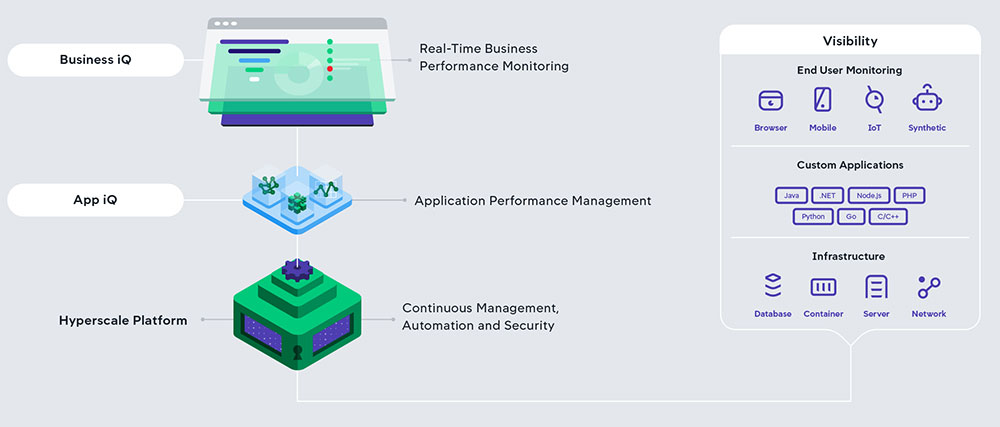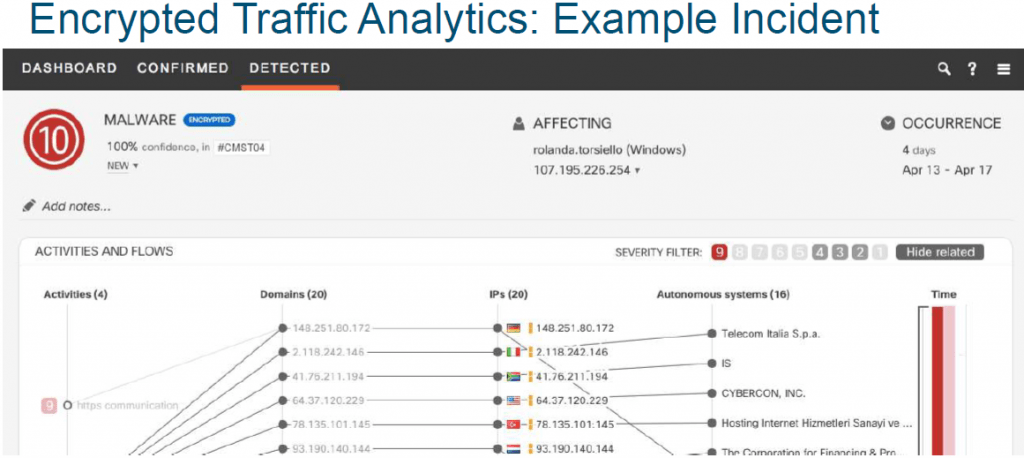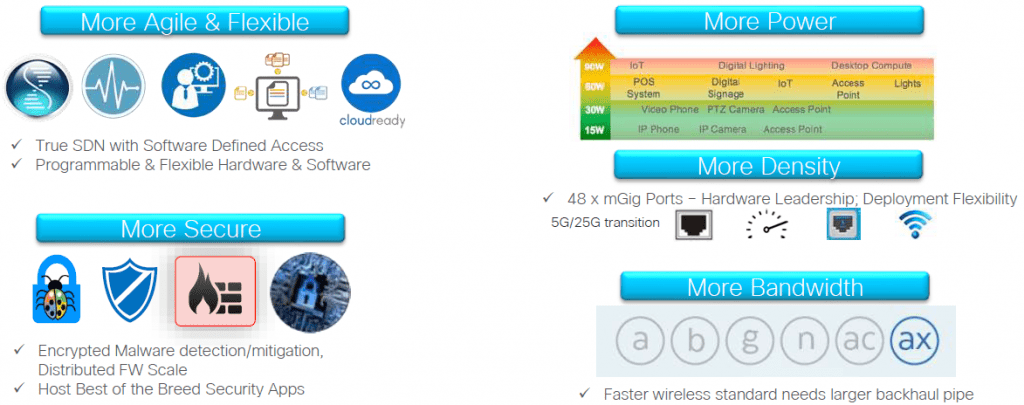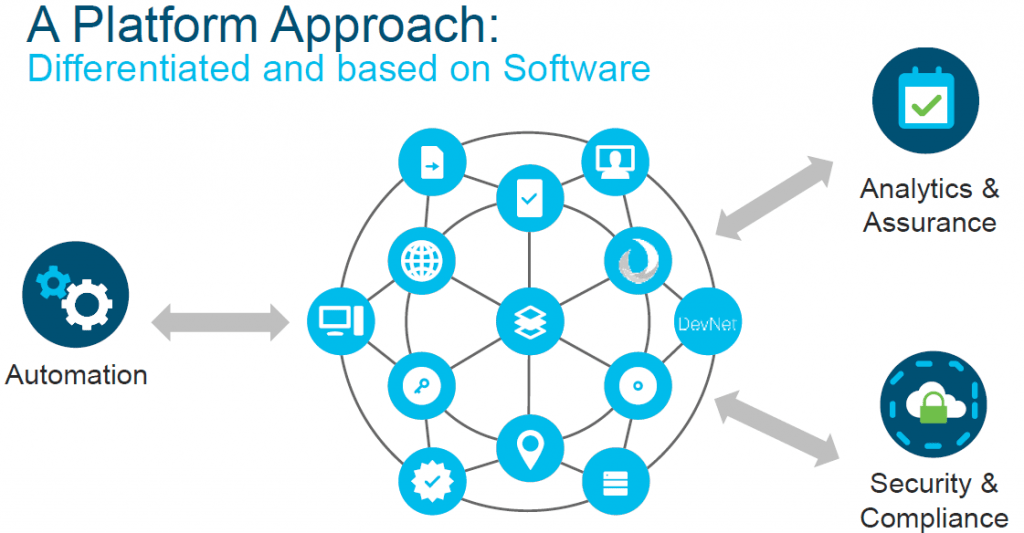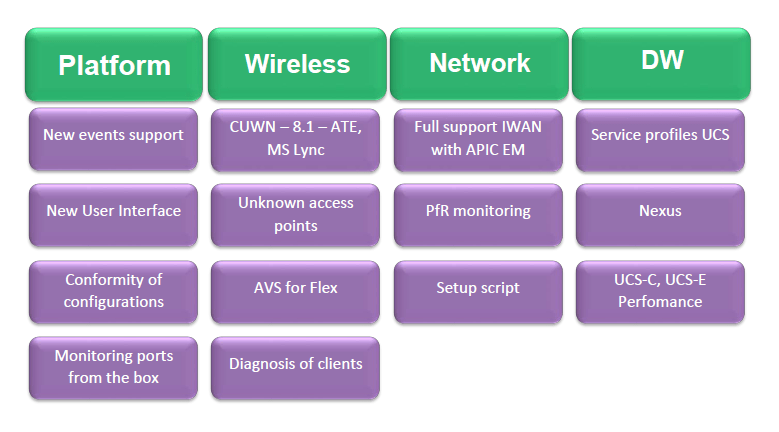Application Performance Monitoring (APM) is one of the most promising services offered by AM-BITS on the Ukrainian market.
In times of the pandemic, when most employees work remotely, APM solutions are in critical demand. This given, the result of a survey of more than 1000 IT specialists from all over the world showed that 80% of respondents lack reliable information about the progress of services and applications. The importance of understanding business processes for the effective workflow of individual teams and the enterprise as a whole was also noted.
What is Application Performance Monitoring?
Application Performance Monitoring is a set of tools that allow your enterprise’s IT professionals to receive complete and timely information about the performance of all business applications and related processes.
APM systems ensure that the applications that users interact with meet performance standards and functional requirements, thereby providing the desired level of user experience (UX).
End-to-end Application Performance Monitoring
Benefits of APM solutions from AppDynamics
Having studied the variety of APM products in the global IT services market, AM-BITS made a choice in favor of AppDynamics solutions. Today AppDynamics is part of Cisco, the industry leader.
In order to understand the reasons for this choice, let’s turn for answers to Alexander Tsybulin, a leading engineer at AM-BITS, a certified Cisco specialist (CCNP Security, Networking) and AppDynamics.
Application Performance Monitoring (APM) Solutions: Why Do Businesses Need Them?
Today, software is increasingly being introduced into our daily life. Previously, many processes had to be performed manually and required the personal presence of an appropriate IT specialist to complete them. Nowadays, most business tasks can be performed remotely by simply interacting with a PC, tablet or smartphone. More and more companies provide various services through mobile and desktop applications.
For example, no one is surprised by the services of calling a taxi, food delivery, Internet banking, etc. It should be noted that customer loyalty to the brand directly depends on the quality of business applications and interaction experience (UX, user experience). If, for example, a user decided to order a taxi using a mobile application, but his application closed spontaneously with an error, then with a high degree of probability he will use a competitor’s service. And if this happens oftentimes, then the company will permanently lose this client.
Therefore, the main goal of APM solutions is end-to-end monitoring of business applications. The right APM tool can help you identify and pinpoint the source of the problem, move from a reactive to a proactive approach to problem solving, and show the user how application problems affect the business.
What is AppDynamics known for?
AppDynamics is the market leader in APM solutions for business since 2012, according to Gartner. In 2020, the company, being already a part of Cisco, confirmed its status as the best provider in the APM services market for the eighth time in a row. SaaS and on-premises APM solutions have been successfully implemented in enterprises around the world, including large international companies such as Vodafone, BMW, Nasdaq, Cisco and many others.
Gartner’s Leaders Quadrant 2020
for Application Performance Monitoring and Ability to Execute
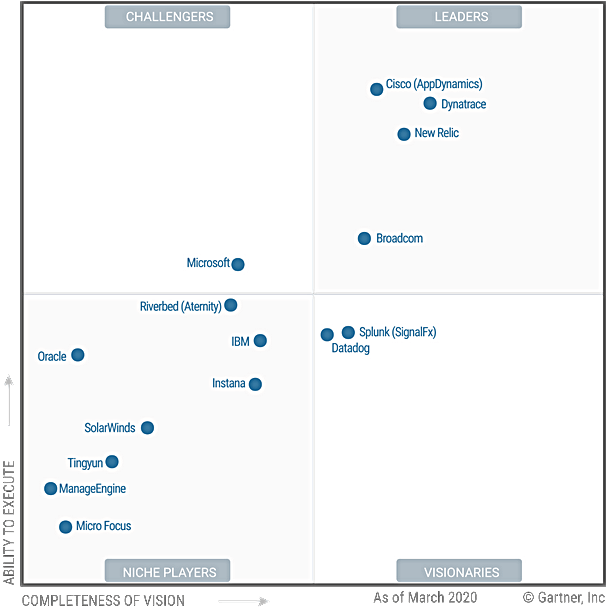
What can AppDynamics offer business users?
The main advantage of AppDynamics’ APM solutions is that they enable users to see what is happening inside the application. APM tools can track every request, from the user interface (browser or mobile app) to classes / methods, database calls and third-party services.
Application monitoring tools help build an interactive interaction map that is always up to date and updated in real time.
In addition, the APM solution sets baselines (baselines) for each collected or configured metric, and also tracks deviations from them. This helps to track possible problems with a particular application that could affect the quality of the system users.
A characteristic feature of AppDynamics solutions is the anomaly analysis function, which greatly simplifies the diagnosis of most issues that arise.
What is the value of AppDynamics APM solutions?
Due to the fact that AppDynamics aggregates information obtained from various sources (Databases, Application Servers, Logs, Browsers and Mobile Applications), it is a single source of truth (SSOT) for all teams that develop and maintain applications. As a result, users receive a number of undeniable benefits:
- Deep granularity of information, while indicating the slowest parts of the application, can significantly reduce the time required to find the cause of the problem, and can reduce the number of personnel required for diagnostics.
- IT service managers see how the infrastructure affects the application, and can immediately understand which team can solve the problem without involving other options.
- Developers spend way less time troubleshooting and diagnosing application problems, thus gaining much more free time to develop new functionality.
- Ease of use of analytics for application management, which allows you to correlate business KPI metrics, taking into account the state of an application.
- Comparison of various metrics (both business and technical) in different releases allows to understand how much the application has improved with the release of the new version.
What versions of AppDynamics APM solutions are available?
Today, AppDynamics offers on the market two options for monitoring application performance – in the form of SaaS and On-Premises versions. In the case of the SaaS version, all questions regarding the deployment, maintenance and scaling of the AppDynamics platform are taken over by the vendor. At the same time, the prices for SaaS and On-Prem licenses are exactly the same for both deployment options.
What business processes can be monitored with AppDynamics?
APM solutions offered by AppDynamics in the IT services market are almost universal. They are able to provide end-to-end monitoring of any business applications that are written in Java, .NET, Python, C / C ++, Node.js and many others. The platform compatibility of these monitoring tools is also encouraging. These are mobile applications for IOS and Android, various databases, and most modern browsers.
What is Business Intelligence in AppDynamics for?
AppDynamics APM solutions have the ability to extract the required application performance directly from executable classes and methods. This makes it possible to build various dashboards – the dashboards that show the state of application performance in real time. For a better understanding, I will give you the following example:
The eCommerce company has its own online shopping app. With the help of an APM solution, we extract information from the application code for paid goods that were purchased by users through this application. Based on the information received, we can build a dashboard that will show the revenue for the desired period of time. Next, you can link and analyze revenue figures by comparing them with the technical state of the application, a particular release version, a certain time of year, etc.
What experience of APM-solutions integration does AM-BITS have?
Since 2019, AM-BITS has had the status of a direct partner of AppDynamics, which allows us to receive more extensive interaction with AppDynamics teams. If necessary, we can bring up for joint discussion issues that require an extraordinary solution. For example, one of the AM-BITS customers required the development of an additional program – an application performance monitoring agent, which was not originally included in the project plan. At our request, AppDynamics specialists managed to develop the agent needed for the customer within six months. Such results of our partnership with a solutions vendor were highly appreciated by our customers.
If we talk about the overall experience of our team in integrating solutions for monitoring application performance, I would like to note that AM-BITS started working in the APM direction long before it became a direct partner of AppDynamics. We began to implement similar projects at Ukrainian enterprises since the end of 2017. At the moment, we can rightfully be proud of the full-fledged team of in-house certified specialists. The AM-BITS team is able to implement not only individual AppDynamics solutions, but also to solve more complex problems associated with all kinds of integrations with any other systems at the enterprise.
Can I learn more about your experience in implementing AppDynamics APM solutions?
Sure. To date, AM-BITS specialists have already successfully completed integration with a number of customers – market leaders in the banking, financial, insurance, and telecommunications sectors. You can receive some of our completed cases by e-mail by simply requesting on our website, or by writing to our manager.
In addition to integration solutions, AM-BITS also offers and provides comprehensive technical support for implemented systems. Thus, we are always ready to help our clients to solve any issues that may arise during operation.
About our expert
Olexander Tsybulin currently works for AM-BITS. He rightfully occupies an interesting, but extremely responsible position of the leading engineer of the company. Olexander is a certified specialist who has successfully confirmed his experience and qualifications with a number of the most reputable IT companies in the world – Cisco (CCNP Security, Networking), AppDynamics, Radware and others. His main areas of work include software monitoring and cybersecurity. Olexander Tsybulin prefers to spend his free time brightly and actively, doing snowboarding, running, and traveling.

Next generation Catalyst 9K switches currently consists of Catalyst 93xx, 94xx, 95xx, and represents a line of devices tailored to the new realities of the digital age and provide a new level of security, programmability, and performance, implemented on the basis of innovation by Cisco Systems in the field of hardware and software.
For example, if you compare now the most common fixed core switch Cisco Catalyst 4500x and 9500 (recommended replacement for 4500x), 9500 line has 3 times better performance and bandwidth throughput, 5 times more buffering and CPU speed, 4 times more memory, Flash and the speed of the ports, 2.4 times higher density 10g ports. But that’s not all, they also supports 2.0 UADP, Perpetual/fast SD-PoE Access x 86 CPU and containers (containers), ETA, AES256/MACSEC256, Virtual StackWise IEEE1588 and AVB, NBAR2, Model-driven programmability, Patching/GIR, Streaming telemetry:

SD-Access functionality and ETA would note separately. SD-Access or Software-Defined Access (software definable access) is a technology combining policy automation and network segmentation which is used to significantly simplify access for network users, devices, and other objects. Thanks to Cisco DNA Center and SD Access (software-defined access) Catalyst switching platform 9k is capable of working as part of a single intelligent network fabric that significantly speeds up network design tasks, allocation of resources and services. It is no longer necessary to copy, modify and insert customization for each switch separately. Policy automation and monitoring through the single interface of the DNA Center allows you to create configurations only once and apply them to the entire network.
ETA (Encrypted Traffic Analytics)
This technology is a further development of the Cisco ideology «network as a sensor», when integrating with ISE (Identity Services Engine) and Stealthwatch network able not only to detect a threat, but automatically isolate it:
Only this Cisco decision allow to identify threats in encrypted traffic with 99% accuracy when the level of false positives of less than 0.01%:
- 6 years of statistics gathering + machine learning + Analytics of 180 patents
- Variety of methods and techniques
- 99% accuracy
- 0.01% false positives
Most cyber attacks today are masked in encrypted traffic, and their number is constantly growing. Through the use of Cisco Talos and machine learning, it is now possible to define the signatures of known attacks even in the encrypted traffic:
Example of incident detection using ETA in encrypted traffic is shown in the figure below:
Behavioral analytics of encrypted traffic based on patterns helps ensure security without compromising privacy, quickly discover the anomaly in traffic, as well as avoid very high load on the equipment related to the decryption process. By the way, in many cases it can be almost impossible.
Complex security reduces the possibility of network attacks, and actually protects your network even at the stage of the active attack, applying the active analytics to detect malware software and threat at the time of attack, and also providing the fast automatic reaction on the threat and prevent it`s dissemination after attack.
Cisco Catalyst 9k (Network Data Platform and Assurance).
Next generation Cisco Catalyst 9k switches represent itself as powerful analytic platform with promptly making classification and correlation of huge data volume, and with help of machine learning transforming it in to proactive analytics, business information and operation information, creating results using DNA Center Assurance.
Cisco Prime InfrastructureCisco Prime Infrastructure is included in the section of Cisco Prime for IT, which in turn included in Cisco Prime suite.
Cisco Prime suite is pretty extensive and besides Cisco Prime for IT also includes separate portfolios Cisco Prime for Service Providers and Cisco Prime for Cloud, and those, in turn, their own topics and products. So, for example, only Cisco Prime for IT includes the following products:
- Cisco Prime Infrastructure
- Cisco Prime Service Catalog
- Cisco Prime Network Analysis Module (NAM)
- Cisco Prime IP Express
- Cisco Prime Collaboration
- Cisco Prime Data Center Network Manager
Cisco Prime Infrastructure («PI» abbreviation is also using) is the most commonly used Network Management solution by Cisco Systems customers and it used for control of company’s IT infrastructure of the Enterprise sector. The major benefits of Cisco Prime Infrastructure are:
- useful interface and intuitive configuration
- visualization of different information (for example, Device 360 View)
- the possibility of customization of the interface profile (dashboards)
- simple and comfortable use
- support for a huge park of the Cisco Systems devices
Unfortunately, there are disadvantages, the system initially focused on Cisco Systems equipment and not a multi-vendor. Third party hardware support is available, but only if you have required MIB.
Cisco Prime Infrastructure has a modular structure, and depending on the set of modules can have varying functionality. Cisco Prime Infrastructure consists of the following software components (modules):
Lifecycle –the main module, helps network managers with daily tasks solution:
- infrastructure monitoring, also includes an opportunity of monitoring and diagnostic wireless infrastructure problems
- flexible configuration of filters and incidents
- in creating backups (software of network devices, configuration)
- software images administration
- statistics on work activities of the devices (uptime, state, incidents etc.)
- inventory of devices
- hardware configuration, include using of templates
- basic network audit
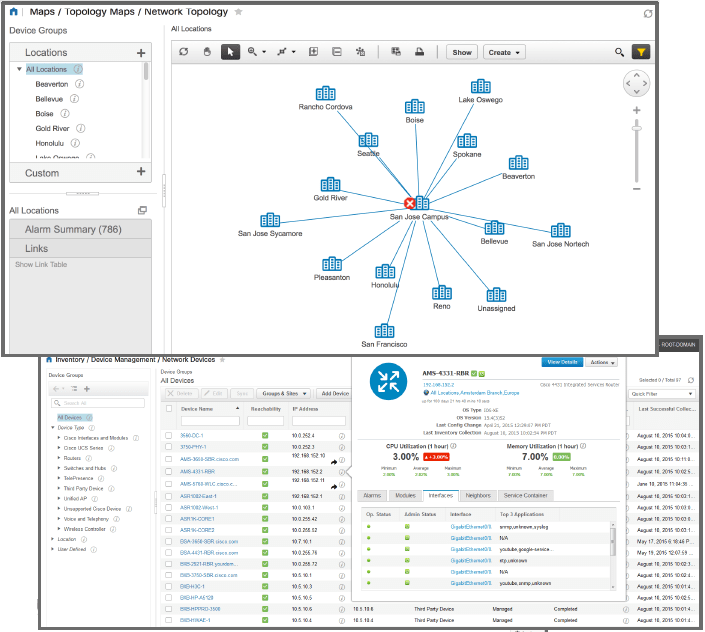
For today the most relevant version of Cisco Prime Infrastructure is 3.X version. The management interface is formed by dashboards necessary for administrator and immediately shows all the most important information for the administrator (available devices, alarms and incidents, loading etc.)
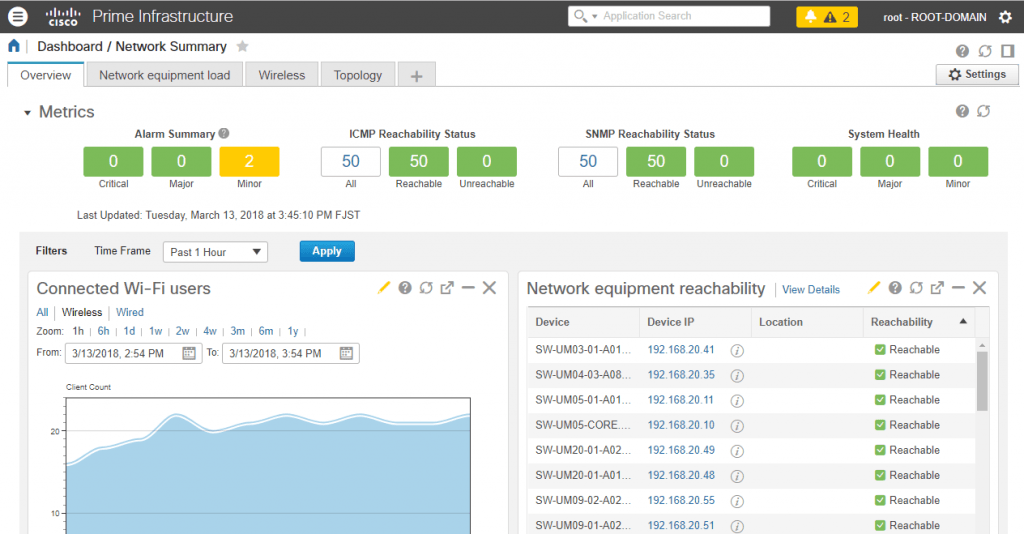
Assurance –the optional module:
- Service status dashboard provides an overview of the state of important applications;
- Support Cisco AVC 2.0 technologies, NetFlow, Flexible NetFlow, NBAR2, Performance Agent, Medianet
- Control and diagnosis of apps
- Configuration and monitoring of QoS on interfaces
- Support of NAM: traffic analysis, metrics about apps response, analysis of protocols
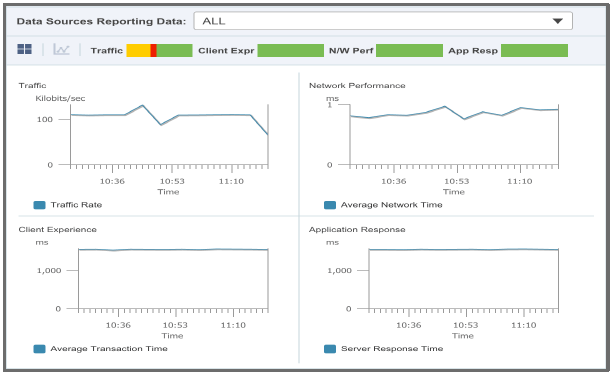

Plug and Play – the optional module, responsible for automatic configuration of equipment possibility without using of console access (using mechanism of Automated Deployment Gateway). Improvements in Cisco Prime Infrastructure 3.x
Cisco Prime Infrastructure is available as hardware solution (appliance), or as virtual appliance (can be deployed as a virtual machine). The following are the resource requirements for Express, Express Plus, Standard and Pro (virtual machine) and for appliance (in table. EXP, EXP-Plus, STD, PRO и Gen2)

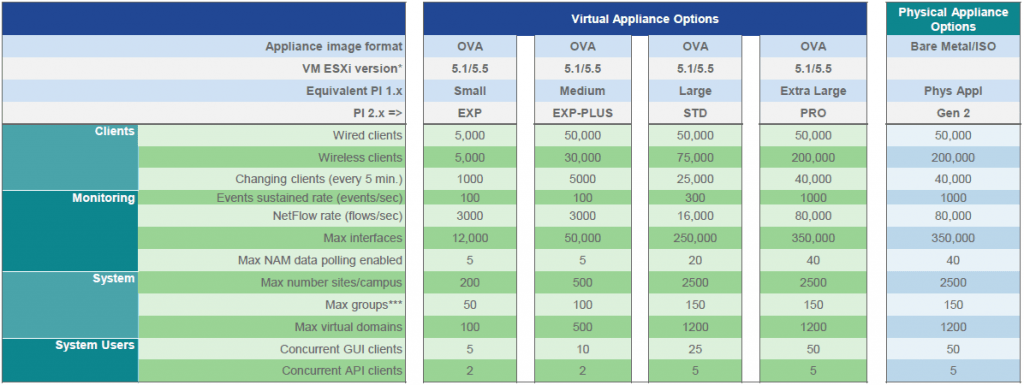
And finally a little background, until 2011 year there was quite a well-known portfolio of solutions called “Cisco Works”, there were a large number of installations and at many customers it still up and running not looking that it is announced End of Life и End of Support long long time ago. Cisco Works was completely rebuilt and transformed into the Cisco Prime. Time by time Cisco Systems starts «trade in» program for old and outdated products, which allows customer to save good amount of money when purchasing new or upgraded SW and products. We do recommend all the customers who has such an old and outdated products, including “Cisco Works” to contact our sales representative regarding help in upgrade possibility, because “Cisco Works” products not only outdated, but it also got a lot of changes regarding functionality, supported products, user-friendly interface and so on when we talk about Cisco Prime.
Cisco Identity Service Engine (ISE)Cisco Identity Service Engine (ISE) – is a high-performance and flexible solution for access control with context, which brings together authentication, authorization, and accounting (AAA) services, assessing the status of endpoint, profiling and access control within a single platform.
ISE has such functions like:
- Holding corporate user’s and endpoint devices authentication -provides the ability to determine what enterprise users and/or devices are allowed access to the network.
- Providing authorization to enterprise users and endpoints – determines which network resources successfully authenticated user and/or device is permitted to get Guest access– creating a temporary guest account for customers, visitors and definition of corporate network resources available to them.
- Use of personal devices by corporate users – allows users to register personal devices from which limited access to company resources will be allowed.
- Device profiling – support for built-in device profiles, as well as their creation for more flexible configuration of access policies.State Assessment of the connected devices – allows to check devices that are connected to the network to meet the requirements (for example, to the installed OS, antivirus, antivirus updates, anti-spyware, etc.) and in case of non-compliance, notify the user about it and propose necessary actions to fulfill these requirements.
- Providing AAA for network devices– providing a single place for authentication, authorization and accounting for administrators access to network equipment, without creating many local accounts and access rules on these devices.
- Platform Exchange Grid(pxGrid) – using to exchange contextual information between Cisco platforms and partners, to increase the speed of response to threats.
Cisco ISE can be represent as a hardware (as Secure Network Server ) or virtual solution. Licensing is carried out by the number of devices and functionality.
Types of licenses:
- Base – permanent license that allows authentication and authorization functionality of corporate users and devices, guest access and use of corporate users their personal devices.
- Plus – is a subscription and addition to the Base license, adds the functionality of device profiling and platform Exchange Grid (pxGrid).
- Appex – is a subscription and addition to the Base license, adds a state assessment functionality of the connected devices.
- Device Administration – a permanent license includes the ability to provide AAA for network equipment ( you need Base license for a minimum of 100 devices).

